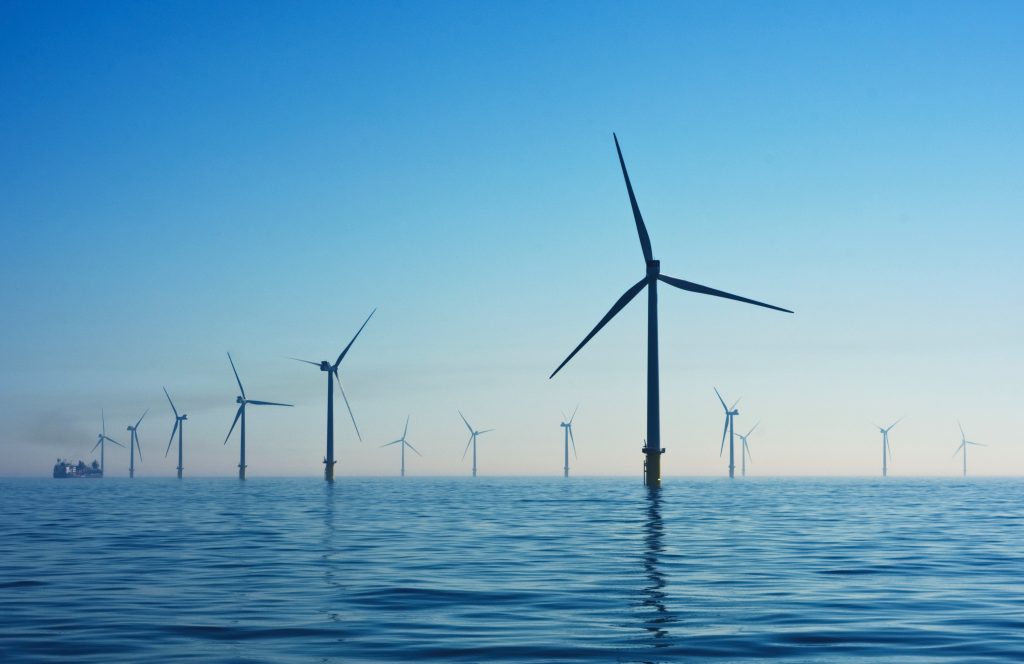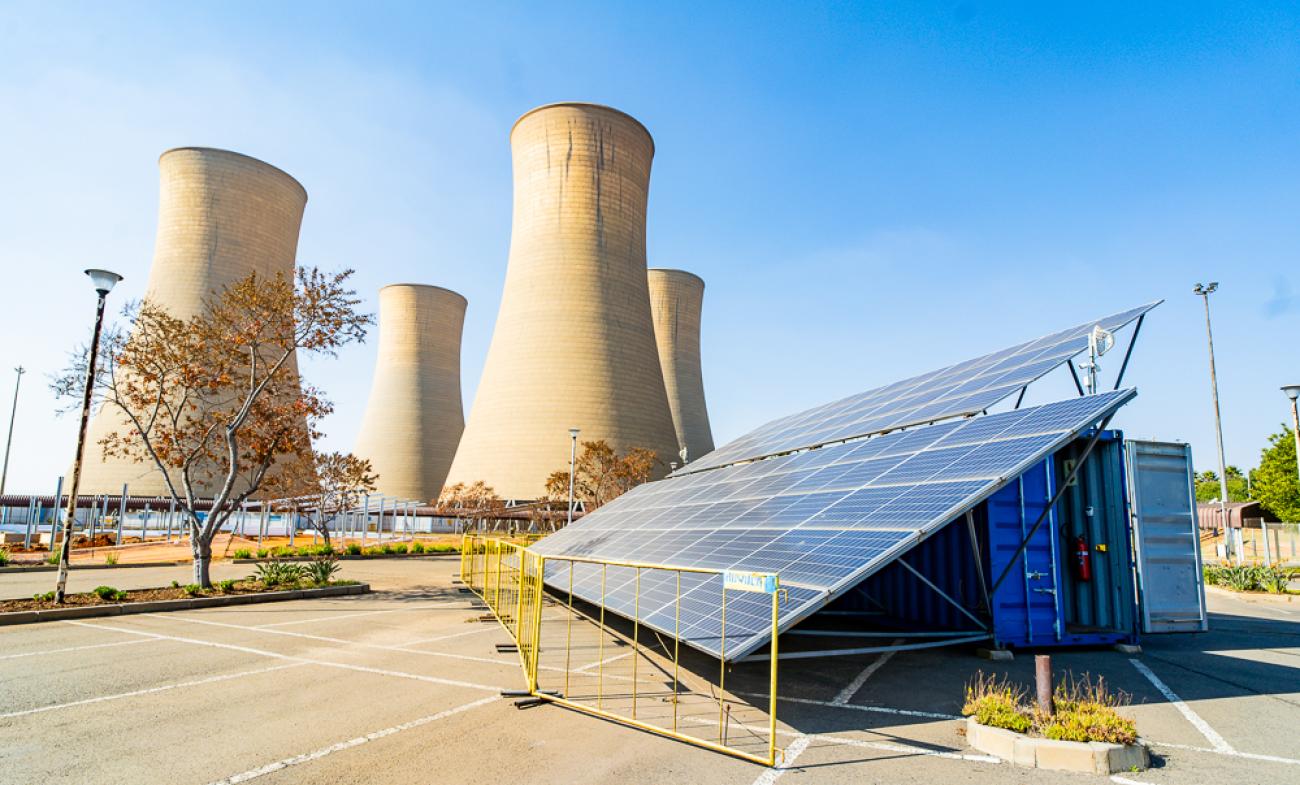
South Africa’s Climate Change Strategy: Integrating a Just Energy Transition into a Climate‑Resilient Development Framework
In the face of escalating global climate threats, South Africa stands at a pivotal crossroads. The country’s policy architecture—from the National Development Plan and Sustainable Development Goals to Nationally Determined Contributions—must embrace climate change as a core priority. South Africa’s future hinges on five synergistic pathways:
- Embedding climate considerations into national development planning.
- Strengthening its Nationally Determined Contribution to a low‑carbon economy.
- Accelerating the shift to renewable energy.
- Advancing climate change adaptation and resilience.
- Mobilising finance for a just transition.

1. Mainstreaming Climate into National Plans (NDP & SDGs)
The South African National Development Plan 2030 must integrate climate risks and resilience as central pillars. By incorporating climate-smart agricultural practices, green infrastructure, and energy planning into the NDP—and aligning them with the UN’s Sustainable Development Goals—South Africa can steer towards sustainable and inclusive growth.
2. Nationally Determined Contribution & a Low‑Carbon Economy
South Africa’s NDC aims to peak emissions by 2025–2030 and plateau thereafter. Transitioning to a low‑carbon economy hinges on ambitious carbon pricing and market reforms:
- The carbon tax must align with IMF-recommended levels—US$25–75/tCO₂—to incentivize renewables over coal :contentReference[oaicite:1]{index=1}.
- Reforming Eskom’s monopoly fosters competitiveness and encourages private-sector renewable deployment :contentReference[oaicite:2]{index=2}.
- Streamlining regulations reduces red tape and enables proactive investment :contentReference[oaicite:3]{index=3}.
3. Renewable Energy & the Just Energy Transition (JET)
Renewables in South Africa—solar PV, wind, biofuel—accounted for just ~7.3% of the energy mix in 2022, while fossil fuels still dominated (~80%) :contentReference[oaicite:4]{index=4}. However:
- The 2019 IRP targeted ~6.4 GW via REIPPP across 102 projects :contentReference[oaicite:5]{index=5}.
- Plummeting costs of solar and wind, alongside carbon pricing, would more than double renewables by 2030 :contentReference[oaicite:6]{index=6}.
- A just and inclusive transition ensures that communities linked to coal are not left behind :contentReference[oaicite:7]{index=7}.

3.1 The Case for Equity
The UN‑backed JET approach seeks:
- Protection for those in legacy coal industries through training and income support.
- Investment in community‑driven renewables to provide energy access and livelihoods :contentReference[oaicite:8]{index=8}.
- Leveraged international learning—COP27 JET Partnership with a R1.5 tn (~US$97 bn) roadmap :contentReference[oaicite:9]{index=9}.
4. Adaptation & Building Resilience
Climate impacts are already felt: Cape Town storms, severe droughts, agricultural disruptions. A climate‑resilient approach requires:
- Infrastructure systems (roads, water, energy) engineered to withstand extreme climate events.
- Agri‑sector adaptation—drought-resistant crops and optimized irrigation.
- Biodiversity safeguards and conservation of natural buffers—wetlands and coastal zones.
5. Financing a Just & Resilient Transition
Major financing gaps exist:
- African climate finance needs top US$80 bn annually; G20/G20 presidency must deliver :contentReference[oaicite:10]{index=10}.
- EU‑spearheaded JETPs initially leveraged Western support; bureaucratic hurdles still deter investors :contentReference[oaicite:11]{index=11}.
- Innovative vehicles—blended finance, green bonds, climate resilience funds—are key.
5.1 European Union 🇪🇺 & Carbon Border Adjustment Mechanism (CBAM)
The EU CBAM (2023 check/reporting, full implementation 2026, exemptions phased out by 2030) taxes embedded carbon in imports to prevent leakage :contentReference[oaicite:12]{index=12}. Consequences for South Africa:
- Exports of steel, iron, aluminium, cement, fertiliser, chemicals, plastics face carbon tariffs :contentReference[oaicite:13]{index=13}.
- SA goods to EU could drop ~4% (goods ~R1.4 bn annually) :contentReference[oaicite:14]{index=14}.
- Africa-wide export loss ~0.9% GDP (~US$16 bn) :contentReference[oaicite:15]{index=15}.
- SA Trade Ministry may challenge CBAM at WTO or negotiate compensations :contentReference[oaicite:16]{index=16}.
- Local carbon price (ZAR190/t ~US$10) is far behind EU (~€60–74/t); needs alignment :contentReference[oaicite:17]{index=17}.
- To comply, exporters must embed renewable energy procurement within IFRS obligations :contentReference[oaicite:18]{index=18}.

5.2 Regional / BRICS Collaboratio
BRICS and developing economies can pool resources and innovation:
- Joint climate‑resilient infrastructure investments.
- Mutual mechanisms to share carbon pricing tools and low‑carbon tech.
- Collective negotiation platforms at WTO; mobilise an equitable decarbonization fund :contentReference[oaicite:19]{index=19}.
Policy Recommendations
| Area | Policy Actions | Outcome |
|---|---|---|
| Carbon Tax & ETS | Increase to ≥US$25‑75/t; minimize allowances; phase in ETS | Drives clean energy, reduces CBAM exposure |
| Eskom Reform | Dismantle monopoly, open to private producers | Stimulates investment, improves reliability |
| Just Transition | Community retraining; local IPP models | Fair labour shifts, social cohesion |
| Climate Adaptation | Climate-proof infrastructure; crop resilience | Reduced losses from extreme events |
| EU CBAM | WTO engagement; invest in low‑carbon exports | Mitigated export impacts |
| Finance | Tap G20 funding; mobilise blended and private capital | Close financing gaps, attract investors |
| BRICS & Developing Coalitions | Regional knowledge sharing and funding mechanisms | Stronger negotiating power and innovation |
Conclusion
South Africa’s path toward a climate‑resilient development model is achievable—if it reorients its national planning around climate, accelerates its just energy transition, reforms markets like Eskom, tightens its carbon pricing, and secures new finance. The challenges posed by the EU’s CBAM highlight the urgency—but also underscore the opportunity: by decarbonising industry and aligning with international standards, South Africa can enhance competitiveness, reduce emissions, support vulnerable communities, and claim global leadership in sustainable development.
Collaboration—with the EU, WTO, BRICS partners—is vital to ensure the transition is effective, fair, and resilient. With coherent policy, finance, and partnerships, South Africa can deliver a future that is low‑carbon, inclusive, and globally competitive.
further reading:
- UN Sustainable Development Goals
- European Environment Agency (EEA)
- Intergovernmental Panel on Climate Change (IPCC)
🧭 Table of Contents
- Mainstreaming Climate into National Plans
- Nationally Determined Contribution & Low‑Carbon Economy
- Renewable Energy & Just Energy Transition
- Adaptation & Resilience
- Financing Transition & CBAM Impacts
- Policy Recommendations
- Conclusion
for everything new please visit our website: africatruthobserver.com